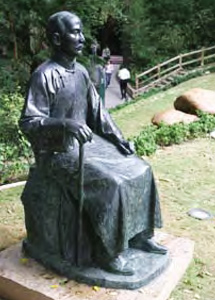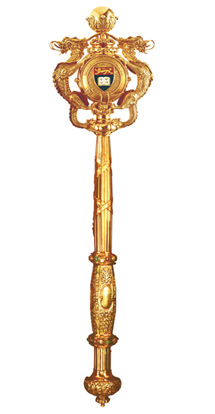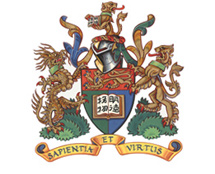Statue of Dr Sun Yat-sen

"I feel as though I have returned home, because Hong Kong and the University of Hong Kong are the birth place of my knowledge."
Public address by Dr Sun Yat-sen
at HKU’s Loke Yew Hall on February 20, 1923
The Mace

The Mace is carried in University processions as the symbol of authority. Made of silver gilt, it is 40 inches long and weighs about 300 ounces, the two collars being set with amber-red and green jade stones. The drum bears the University’s coat of arms enamelled in colour and encircled within a buckled belt displaying the motto. On both sides of the drum are full-length four-toed Chinese dragons.
Sapientia et Virtus
The Chinese motto on the University’s insignia is taken from
the Confucian classic The Great Learning and refers to moral and
intellectual enrichment of human lives.
The Latin motto, Sapientia et Virtus, aptly translates the spirit
of the Chinese. The word Sapientia was in the Middle Ages
rendered “wisdom”. It represents the best results of ge-wu (格物)
or Science as we should translate the phrase in modern English.
The Latin Virtus, in the sense employed by the Stoics, with
emphasis on the vir, has no exact equivalent in modern English,
but it is the right meaning of de (德) in Confucian literature.
Sapientia et Virtus conveys the application of knowledge to the
necessities of life, subject to moral restraints.
The Coat of Arms

The University of Hong Kong, founded in 1911, is the oldest tertiary institution in Hong Kong. It was granted a shield and a motto by the College of Arms in 1913, and throughout its history the University's visual identity has been firmly based on their display, often coupled with the University's name. No other university in Hong Kong possesses a coat of arms. This is a distinction that resonates outside Hong Kong, particularly in the United Kingdom, other Commonwealth jurisdictions, and the United States. It is also a reminder of the University's antiquity, and a most dignified and effective corporate identity.
